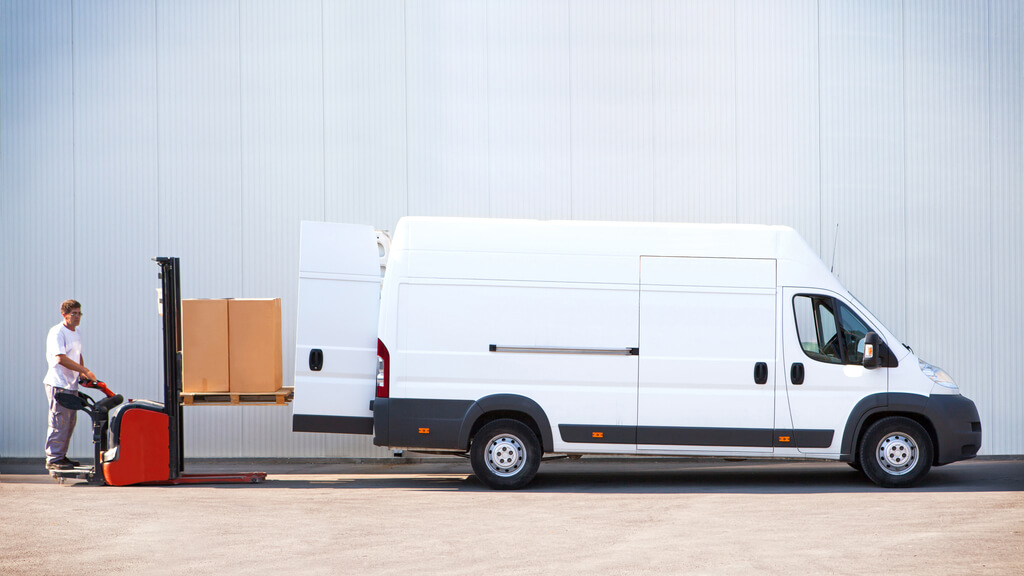A Guide To Checking The Driver And Vehicle When Receiving Food And Supply Deliveries

Food waste is especially rampant in the restaurant industry. Approximately 4-10% of food is wasted before it reaches the consumer, which significantly impacts your bottom line.
Tightening up your receiving practices can help you and your business ensure someone checks the driver and vehicle and unpack the truck. There’s a lot that can go wrong from farm to plate, and you need to be mindful that you and the driver are HACCP compliant.
Determine Who Receives Food Deliveries
When a courier driver arrives at your business, you don’t want to start pulling straws. Ideally, you’ll have 2-3 staff members on-site each day to check deliveries. Although a manager or chef would be the best choice, just about anyone can take on this responsibility if they’re trained.
However, expertise and experience are still necessary to determine food quality. Whoever receives food deliveries should have a Food Handlers Certificate and should know what the food is supposed to feel, look, taste, and smell like. Only allow trusted people near the truck.
Read Up On HACCP Compliance Standards
HACCP identifies critical control points related to transportation and receiving of food shipments. As a restaurant owner, you’re likely aware of HACCP procedures, but the rest of this guide will be using these standards to ensure the driver, truck, and supplies are compliant.
Here are some essential elements to consider when receiving products:
- Never assume the food is good enough to eat based on sight alone.
- Receiving dock must be tidy, well lit, and cleaned daily.
- Schedule deliveries to allow enough time for the inspection and receiving.
- Have gloves, containers, scales, and thermometers within reach.
- Record the temperature of each delivery and reject shipments if necessary.
Each food group has a slightly different procedure. Dry foods, dairy products, fresh meat, and produce need to be examined thoroughly, or the whole process is rendered useless.
Create an Easy-to-Follow Checklist
A checklist can help reduce human error and ensure that the products you’re receiving meet HACCP compliance standards. Keep your checklist beside the shipping and receiving door so it’s easy to grab when you need it. Print multiple copies of each delivery for your records.
Alternatively, you could use an app or create a Google Doc that stores your checklist online.
It doesn’t matter how you set up your checklist as long as it makes logical sense. It’s essential to start with easy disqualifications first, like the driver and the truck, before checking food.
Perishables, like fresh foods, should take priority. Fresh foods are more likely to expire from sitting in parked trucks than canned and dry foods. Frozen foods will come in a separate truck.
If your employees follow the checklist, all deliveries should be up to your restaurant’s quality and safety standards every time. If they don’t, review the checklist or re-train your employees.
Checking the Shipment: A Step-by-Step Guide
While you should create a checklist before checking the vehicle, you can use the guide below to create your receiving and supply checking procedure. Start by checking the driver and vehicle.
Check the Driver and Vehicle First
Do a quick inspection of the interior and exterior of the vehicle and check for cleanliness. Here’s a sample checklist you can use:
The Driver
- Is the driver wearing clean clothing?
- Are they operating the vehicle safely?
- Is the driver careful when moving food items?
- Is the driver knowledgeable about storage procedures?
The Vehicle
- Is the vehicle rusty or unclean?
- Does the vehicle smell bad?
- Are there rats/bugs inside the vehicle?
- Are food and non-food items stored together?
If anything is out of place, you’re in your right to reject the shipment. However, if the driver and truck look clean, grab your thermometer before checking the food or other products.
Check the Temperature Before the Food
Foodborne pathogens start to grow at 41°F-140°F (5°C-60°C). If your thermometer is reading anywhere between these numbers, reject the shipment immediately, even if the food looks and smells good. You have no way of knowing how long your items sat within the “danger zone.”
As a rule of thumb, store hot goods at 140°F/60°C or above and keep refrigerated goods at 40°F/4°C or below. Frozen goods should stay around 0°F/-18°C or below unless they’re ice cream. Ice cream should be frozen between 7°F and 10°F/-14°C and -12°C.
Never guess at food temperatures or trust the thermometer on the truck. It’s in your best interest to double and triple-check every temperature. Otherwise, you may accept a spoiled shipment.
Check Fresh Food Before Dry Foods
Most checking procedures are similar across fresh food, like smelling the food, broken seals, or item weighing. Anything that’s moldy, mushy, or rotten could spoil the whole shipment and shouldn’t be accepted. Always feel the texture of food for firmness or softness.
Don’t accept the shipment if frozen goods are thawed or have large ice crystals.
Always check fresh food first, as they’re perishable and don’t last long.
Dairy
- Start with dairy first, so you can move it immediately to your fridge.
- Check the best-before date for each container, which should be a week before receiving.
Produce
- Check below the first layer of produce for mold, as the best produce is often at the top.
- Check for ripeness, freshness, and other signs of quality.
Meat
- Check the grade of the meat and cut specifications with what’s on the invoice.
- Check the best-before date, which should be a few days before receiving.
Dry Foods
- If the container looks open, check the contents. Check if it was resealed.
- Check for dents on the can. Check for swelling or bulging.
- Check the best-before date to ensure it hasn’t expired.
While checking your shipment, compare the number of items received with the invoice and check for damage or leaks. Once you’re satisfied, start filling out your paperwork.
Check Paperwork and Sign Off
Depending on your shipment, you may need to check for a recall, tags (for seafood), and Government stamps for regulated foods. If that’s the case, take pictures for your records. If any food is unacceptable, ask that it’s returned to the supplier for a credit.




